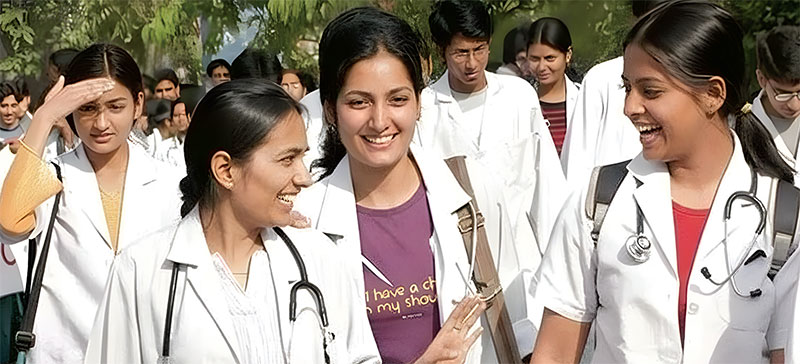Blitz Bureau
NEW DELHI: The Union Cabinet, chaired by Prime Minister Narendra Modi, last week approved phase-Ill of the Centrally Sponsored Scheme (CSS) for strengthening and upgradation of existing state government / Central government medical colleges / standalone post-graduate (PG) institutes / government hospitals.
As part of the scheme, PG seats will be increased by 5,000 and MBBS, i.e., graduation seats, by 5,023, with an enhanced cost ceiling of Rs 1.50 crore per seat. This will strengthen the overall availability of doctors in the country by augmenting the undergraduate medical capacity and ensuring availability of specialist doctors new specialties across government medical institutions.
The total financial implications of these two schemes is Rs 15,034.50 crore for a period from 2025-26 to 2028-29. Out of this, the Central share is Rs 10,303.20 crore and the state share is Rs 4,731.30 crore.
The schemes aim to promote balanced regional distribution of healthcare resources, while being cost-effective by leveraging existing infrastructure. In the long run, they strengthen the country’s health system to meet existing and emerging health needs.
Realising Universal Health Coverage (UHC) for 1.4 billion people critically depends on building a robust healthcare system capable of delivering timely, high-standard services at all levels — particularly in rural, tribal areas and hard-to-reach communities. A robust healthcare system hinges on availability of skilled and adequate workforce.
India’s healthcare education and workforce infrastructure has witnessed significant growth in recent years, reflecting a sustained policy focus on expanding access and improving quality. As on date, India has 808 medical colleges, highest amongst the world with total intake capacity of 1,23,700 MBBS seats.
In the last one decade, over 69,352 new MBBS seats have been added, registering a growth of 127 per cent. Similarly, during this period 43,041 PG seats were added showing an impressive growth of 143 per cent. In spite of this notable growth in number of medical seats, in certain regions there is a need to enhance capacities to match the demand, access and affordability of healthcare.
The 22 new All India Institutes of Medical Sciences (AIIMS) approved under the Pradhan Mantri Swasthya Suraksha Yojana (PMSSY) apart from providing tertiary healthcare services are also playing an important role in building a pool of health professionals with highest standards of medical competence with their state-of-the-art teaching learning facilities.
To expand the pool of qualified faculty, new Medical Institution (Qualifications of Faculty) Regulations 2025 have been issued by adopting a more inclusive and competency-based approach to faculty eligibility and recruitment. These changes aim at addressing the growing requirement of teaching personnel, and meeting academic and professional standards.



